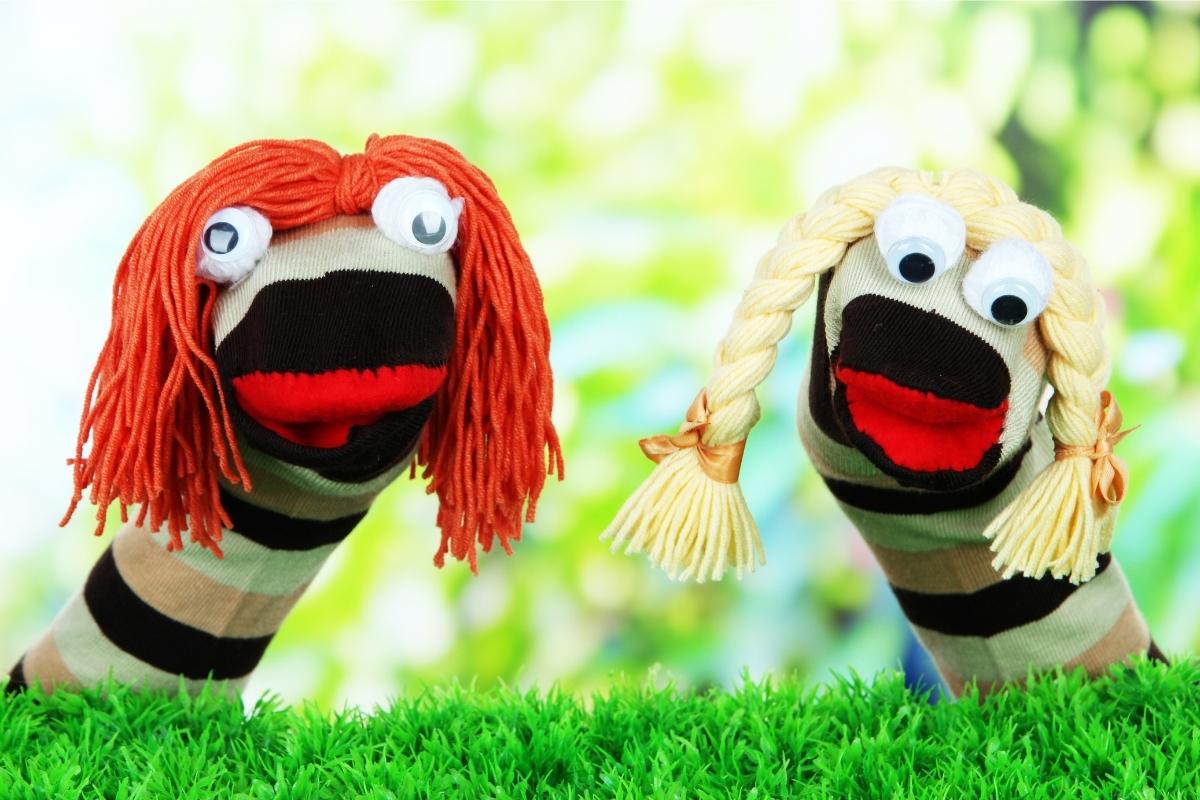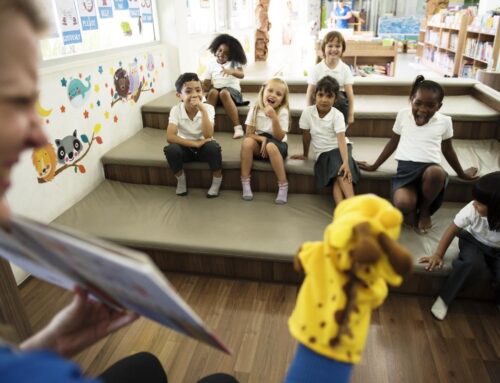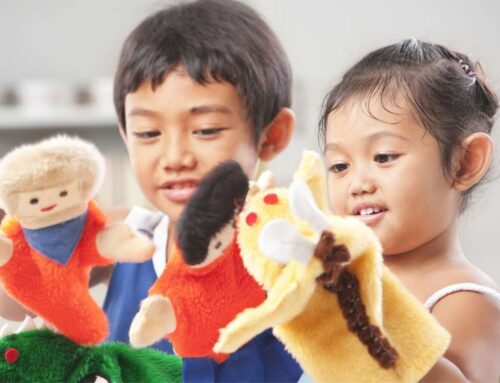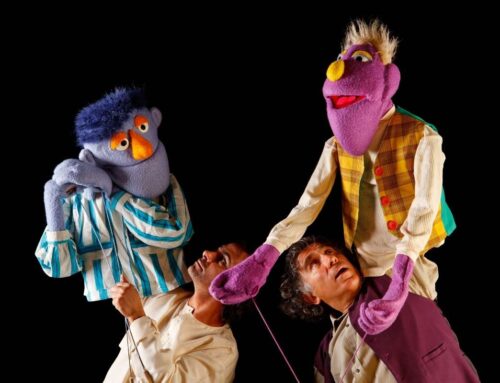Puppetry is an inspiring art form that involves a puppeteer bringing inanimate objects to life in front of a budding audience of children and adults alike. Puppetry is also a great educational tool used by therapists, performers and teachers. In this article, we will explore the different types of puppets and their individual characteristics, aesthetics, mechanics and uses.
Sock Puppets

As the name suggests, sock puppets are made from socks decorated to resemble animals, people or characters. As one of the simplest types of puppets, sock puppets make a great craft activity for young children, who can then put on a performance with their sock friends for the whole family to enjoy.
Finger Puppets
Finger puppets are great for children between two and four years old. A finger puppeteer can control up to 10 puppets at one time to facilitate an animated and energising show. Due to the simplicity of these types of puppets, young children also have the option to become the puppeteer themselves and put on a show, which is a great activity to develop communication skills and imagination.
Hand Puppets
Usually operated with fingers from one hand, hand puppets are simple creations best used to entertain or educate children. They are easily transportable and easily stored, which makes them the perfect companion for a travelling puppeteer.
Ventriloquist Puppets
Although these full-body puppets were traditionally carved from wood by puppet makers, soft materials are becoming more and more popular in the ventriloquist community. No matter the material, the emphasis of movement for all ventriloquist puppets is usually the mouth. However, it’s becoming increasingly common to control other features too, including the puppet’s nose, eyes and eyebrows. The intricate detail of these puppets mean they have grown in popularity for children and adults on our stages, television screens and in our movie theatres.
Shadow Puppets

These two-dimensional beings are connected to rods and operated behind a translucent screen of paper or fabric. The screen is then backlit to create an enchanting silhouette show. Depending on the production level, colourful cellophane can also introduce pops of magic into the puppet show. Due to their simplicity, these types of puppets are best used to communicate simple and abstract tales to a young audience.
Rod and Arm Puppets
These types of puppets have rods attached to their movable limbs, which are most commonly operated overhead, although they can be operated on an elevated platform too. If the rod and arm puppet is large, it can take a small group of puppeteers to control. The main puppeteer usually directs the puppet’s mouth, and the additional puppeteers usually guide the puppet’s body parts.
Marionettes
A marionette is a full-body puppet which is operated from overhead using strings attached to its individual body parts. Even a simple marionette can have up to nine strings attached to each leg, each hand, each shoulder, each ear (to control head movements) and one at the base of the spine (primarily used for bowing). The control of a marionette is a complex task requiring a skilled puppeteer to bring the act to life. Due to the complexity of movement, marionettes are more appropriate for an older audience that can appreciate the delicacy and technique that is required to control them.





